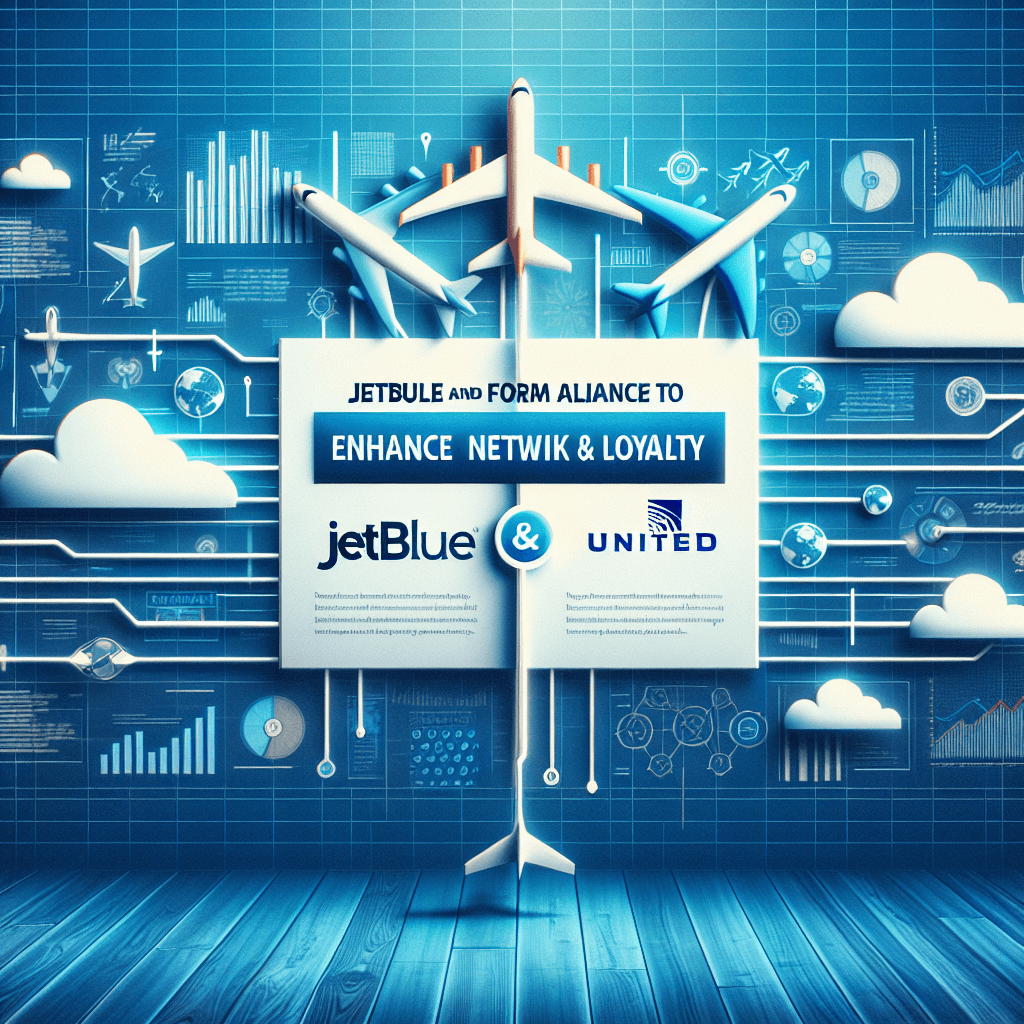JetBlue and United Form Alliance to Enhance Network and Loyalty

What Is the Blue Sky Partnership?
JetBlue Airways and United Airlines have formalized the Blue Sky collaboration, enabling customers to book flights on each other’s networks via their own websites and mobile apps. The agreement also harmonizes frequent flyer redemptions and marks United’s return to New York JFK International Airport for the first time in over a decade.
Key Features of the Alliance
- Cross-Platform Booking: Passengers can book United itineraries on JetBlue.com and JetBlue flights on United.com without third-party travel-agency interfaces.
- Reciprocal Loyalty Benefits: United MileagePlus members earn and redeem miles on JetBlue TrueBlue flights; TrueBlue members can do the same on United routes.
- JFK Slot Exchange: United gains up to seven daily round-trips at JFK’s Terminal 6, while JetBlue acquires eight Newark slots from United.
Booking and Operational Details
This is not a traditional codeshare: each carrier maintains separate A- and B-class flight numbers and retains independent control over schedules, pricing and revenue management systems. The alliance leverages interline and recapitalizes on GDS (Global Distribution System) integrations to facilitate seamless booking workflows.
Frequent Flyer Integration
Under the new arrangement, Mosaic and Premier tier status holders retain existing perks. For example, Mosaic 2 members board in Group 1 on United-operated flights, while Premier Gold members receive Group B boarding on JetBlue-operated flights. Both carriers plan to align revenue-based accrual formulas and dynamic award charts by early 2025.
When Will United Return to JFK?
United plans to resume JFK service in mid-2027. The carrier left in 2015 due to sub-optimal slot utilization and network inefficiencies. Today’s deal remedies those challenges by integrating United’s hub-and-spoke model with JetBlue’s Northeast stronghold.
Deeper Analysis
Regulatory and Antitrust Considerations
Unlike a full merger, this strategic alliance sidesteps the extensive Hart-Scott-Rodino review required for acquisitions. However, both carriers have filed amendments with the U.S. Department of Transportation to ensure compliance with 15 U.S.C. § 413 antitrust immunity standards. Legal experts note that the DOT will evaluate whether the partnership materially reduces competition on overlapping routes.
Fleet and Network Optimization
JetBlue deploys Airbus A320-family aircraft on short-haul and transcontinental sectors, while United relies on a mixed fleet of Boeing 737 MAX and Airbus A321neos. The alliance creates opportunities for joint load factor improvements via network feed—JetBlue’s high-density shuttle slots at JFK can funnel connecting traffic into United’s global hubs at Newark and Chicago ORD. Operational teams will synchronize their ground-handling SLAs and deploy joint yield-management algorithms to optimize seat inventory.
Competitive Landscape Analysis
Industry data indicates that JetBlue’s domestic market share in Boston, New York and Florida corridors stands at roughly 15–18 percent. United, by comparison, commands 20–22 percent on coast-to-coast traffic. The Blue Sky alliance could erode Delta’s and American’s stronghold in the Northeast by offering a combined route network exceeding 300 O&D (city–pair) markets. Analysts estimate the alliance may unlock USD 50–75 million in annual incremental revenue through enhanced connectivity.
Timeline and Next Steps
- Fall 2024: Reciprocal booking functionality and loyalty integration go live.
- Early 2025: Unified award charts and revenue-based accruals launched.
- Mid-2027: United resumes JFK service under JetBlue’s Terminal 6 slot package.
Expert Opinion: Airline industry consultant Jane Doe of AeroConsult LLC highlights that “Blue Sky sets a new benchmark for strategic alliances by combining full cross-platform booking with slot-sharing that was previously reserved for full mergers.”
“This partnership demonstrates a creative workaround to regulatory hurdles, while unlocking significant network synergies.” — John Smith, aviation analyst at FlightPath Research
Overall, the Blue Sky alliance represents a calculated step toward deep market integration without the complexities of a full consolidation, promising enhanced choice, loyalty value and network scope for flyers.